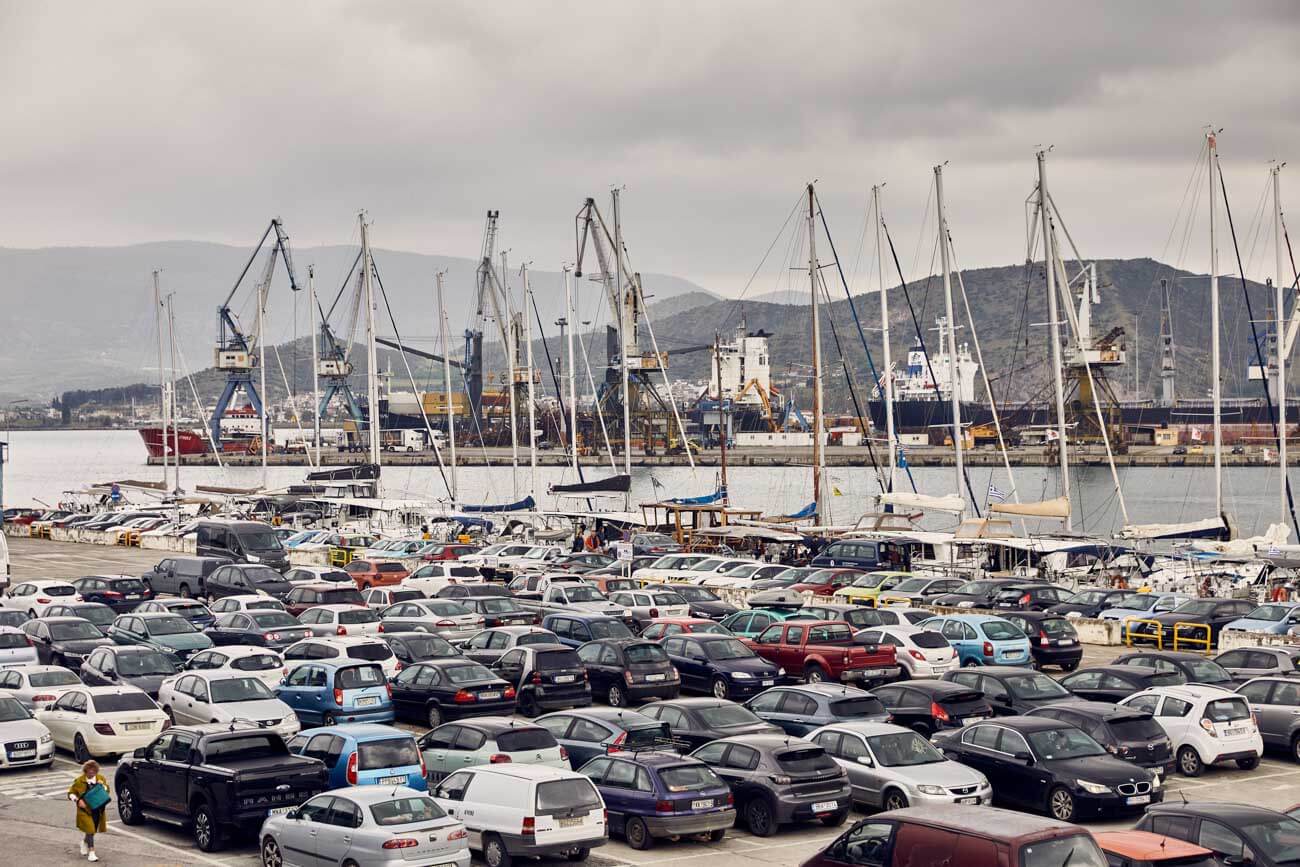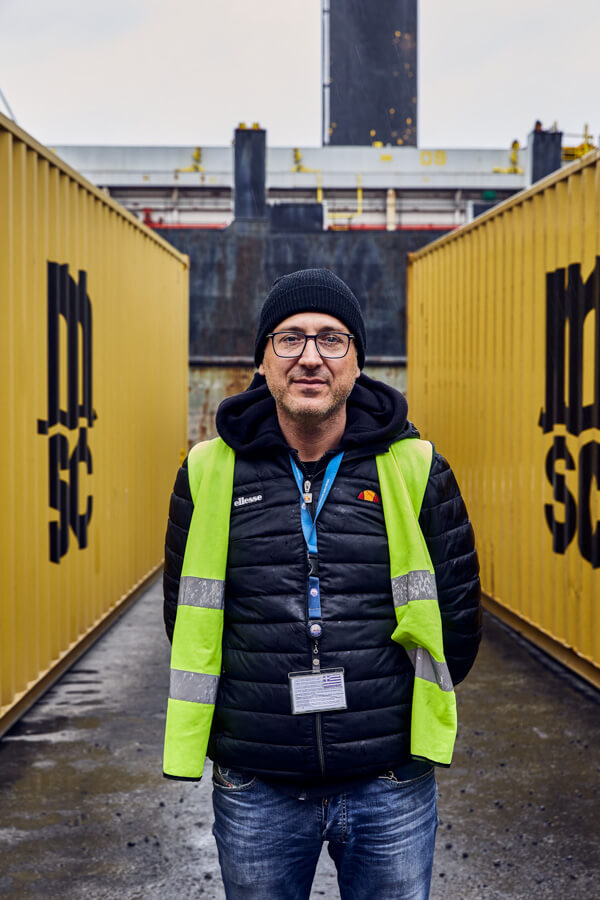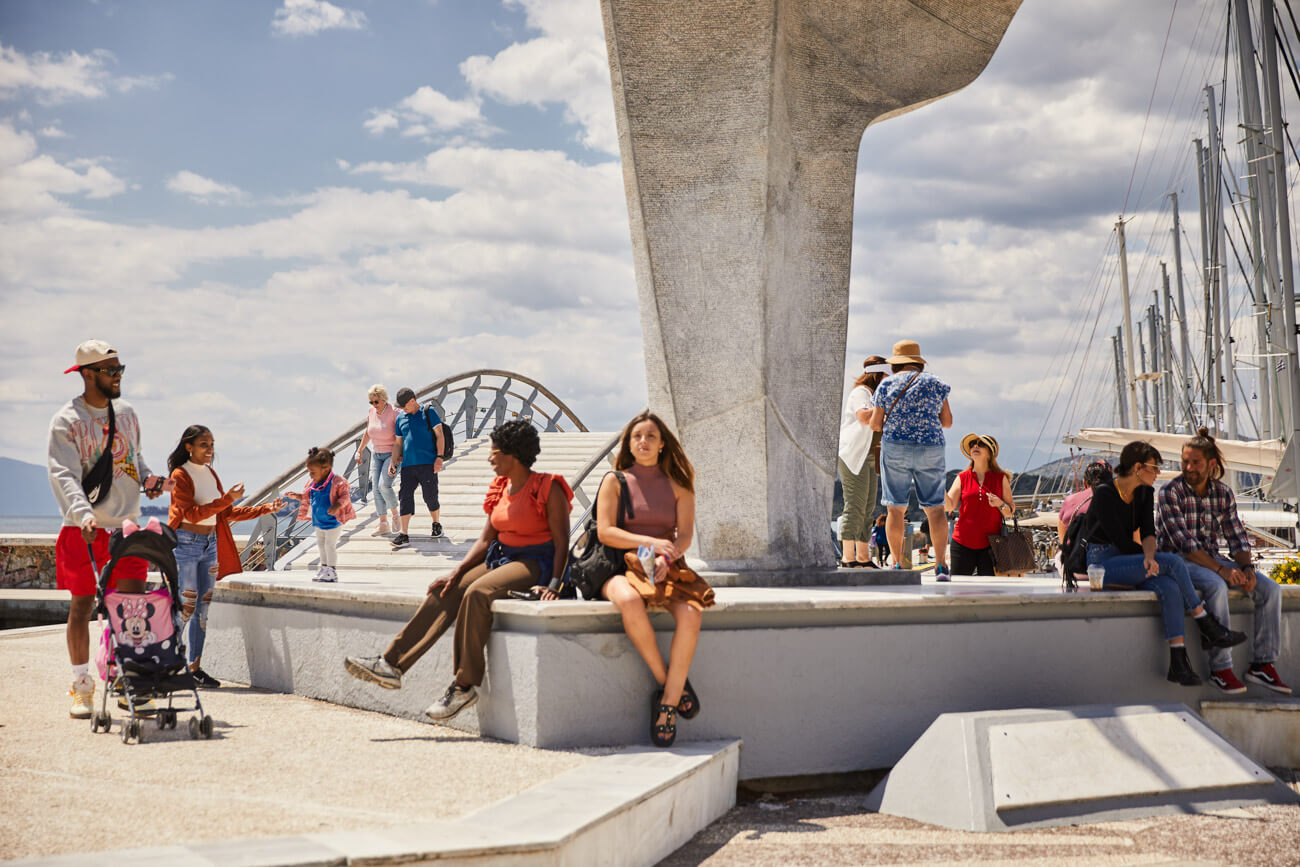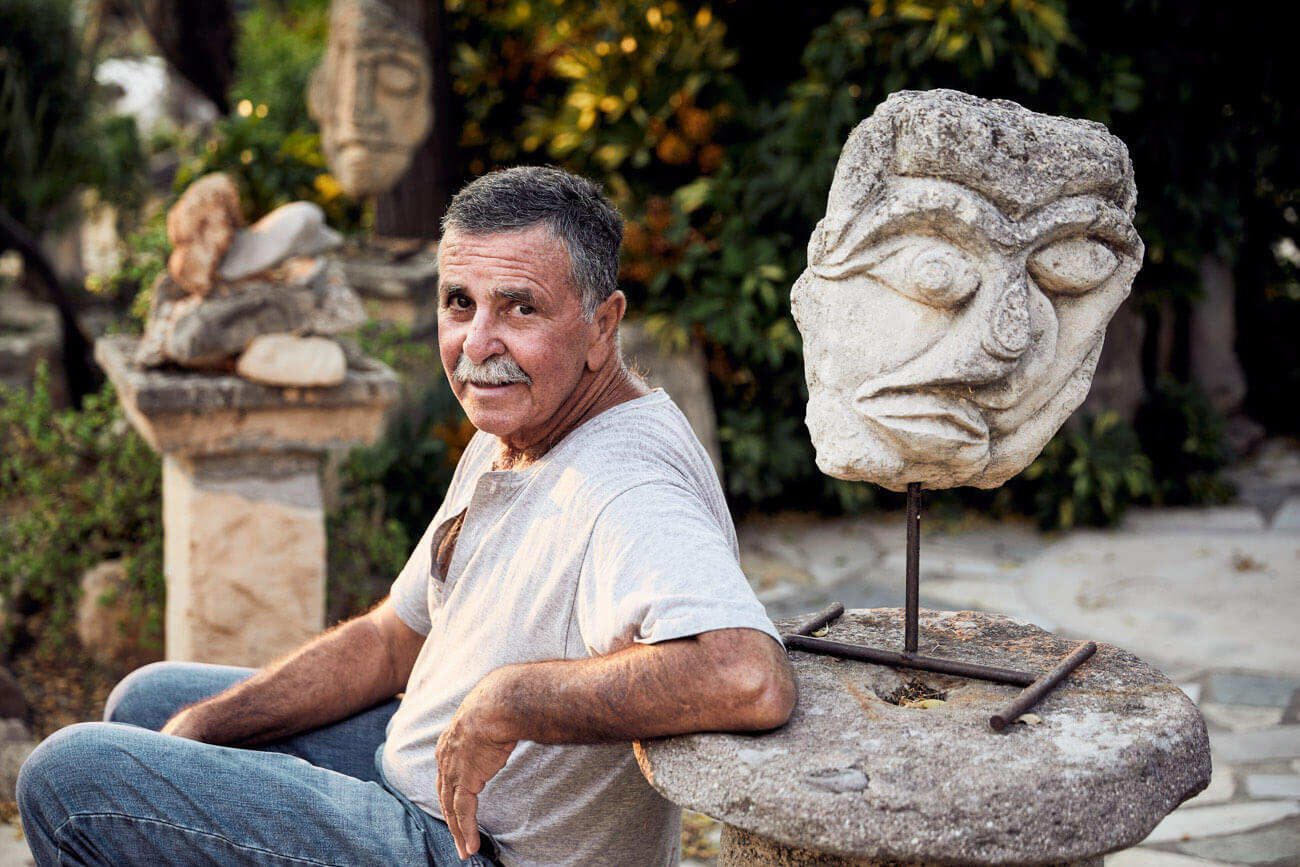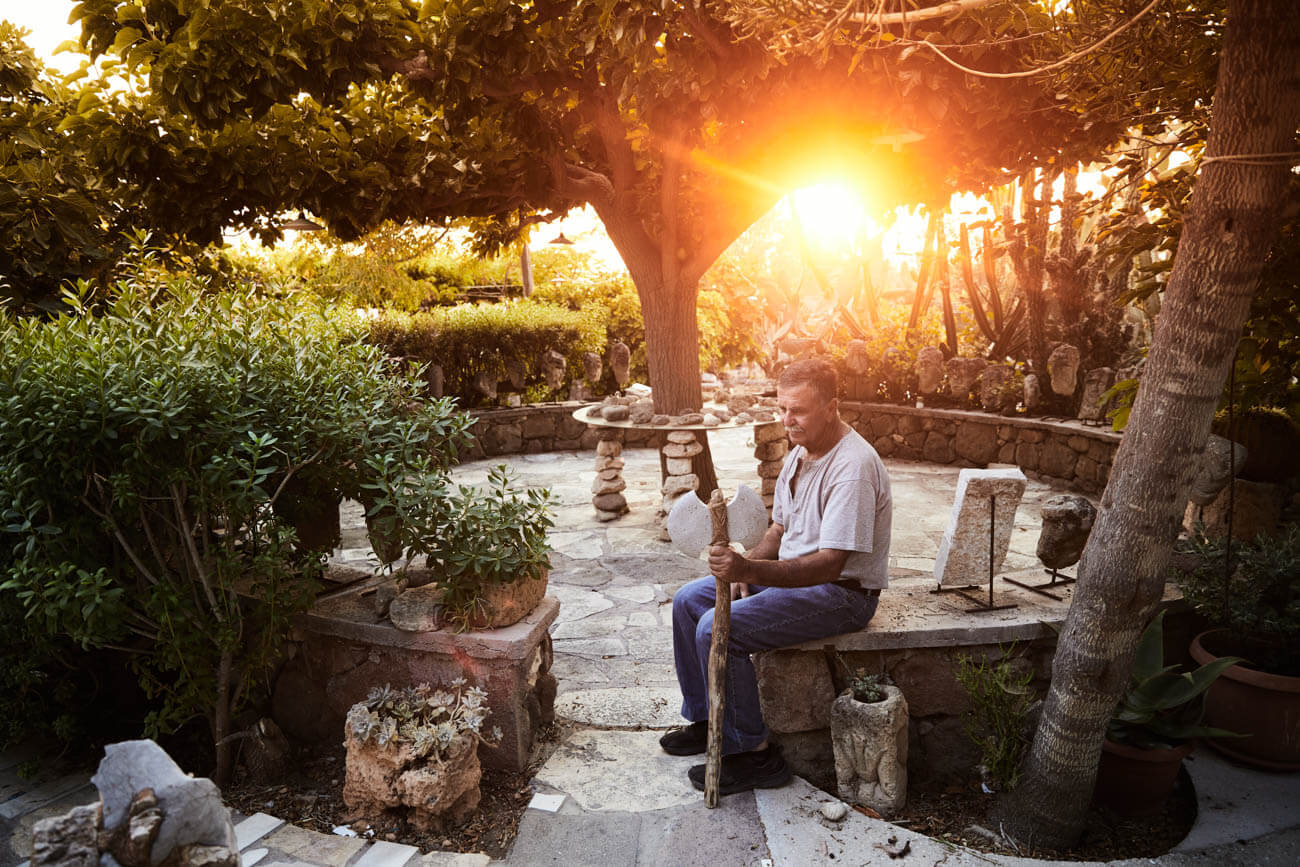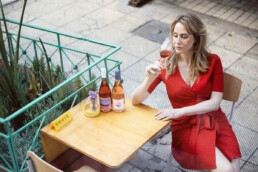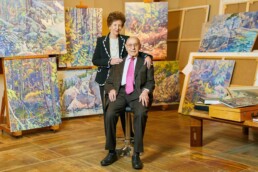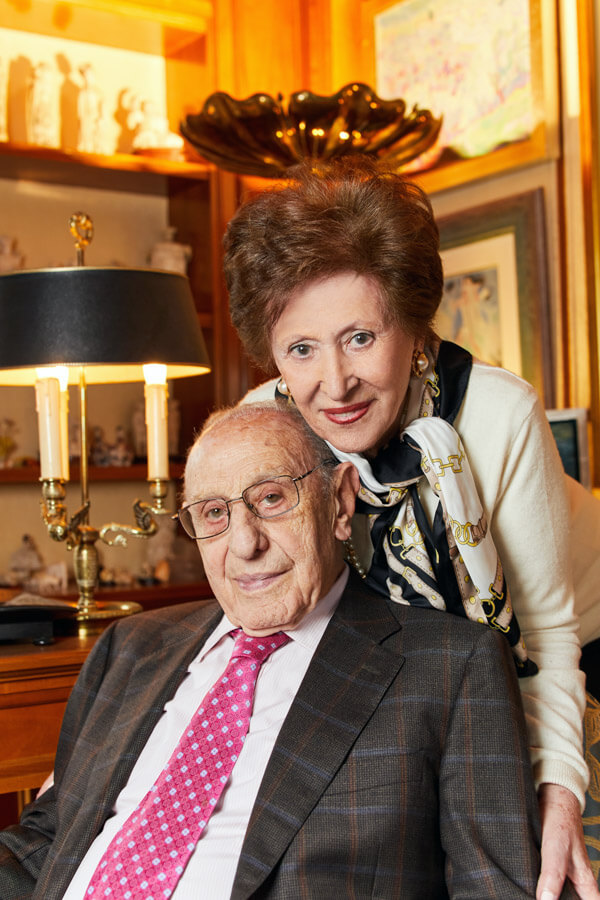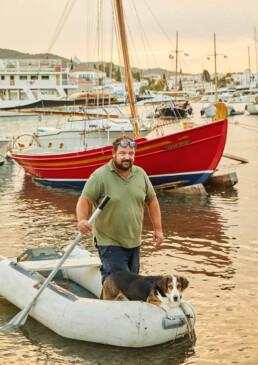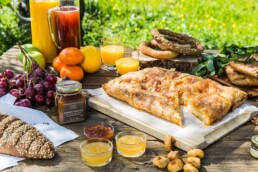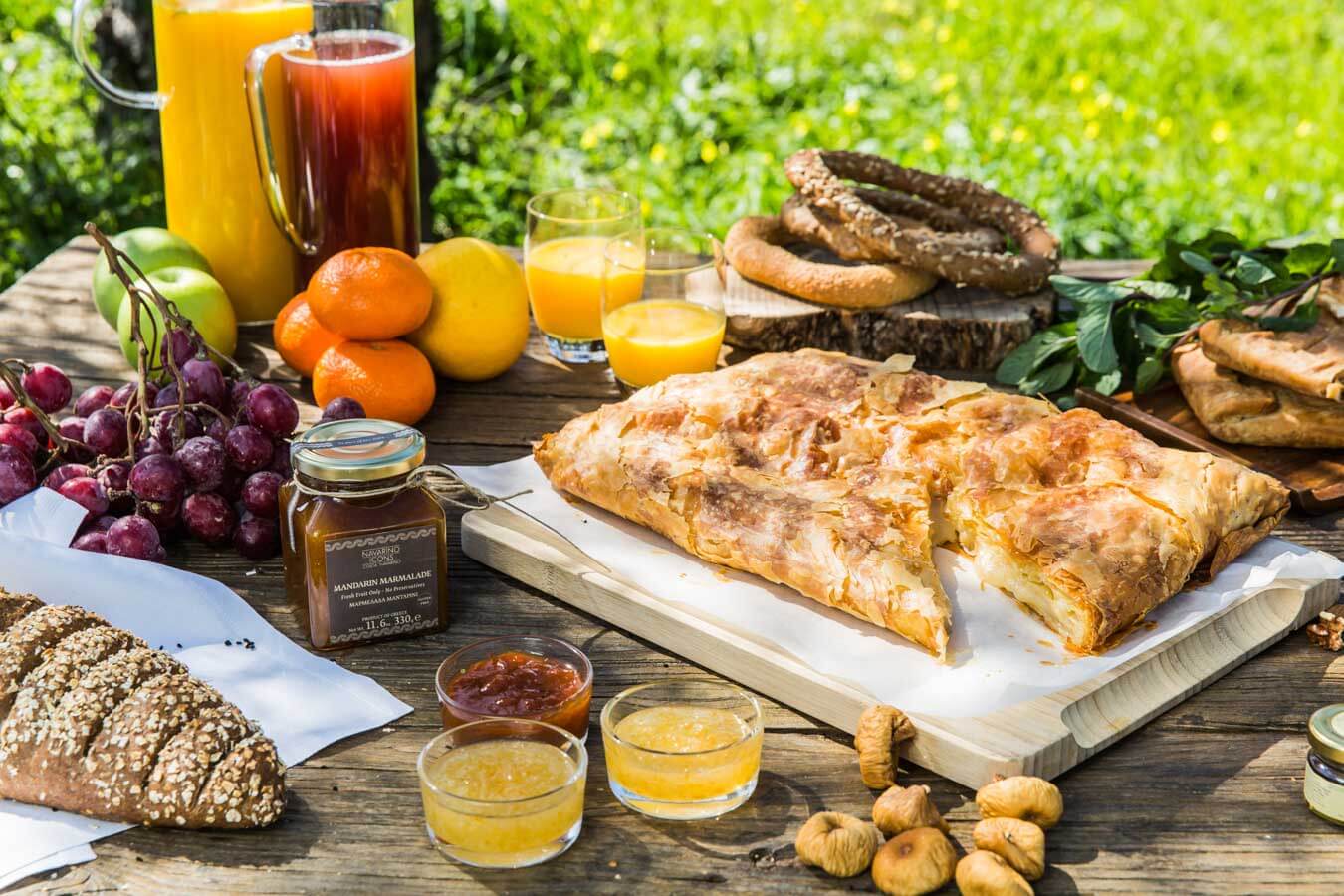Georgios Xenos
“We don’t know after all who is really imprisoned. The one outside or the one inside? And what kind of prison is this? Many people out there remain voluntarily incarcerated. So, I would tell you that many times being inside also involves a kind of asceticism. It has a loneliness characterized by greater freedom. So it always depends on the reason for which you are imprisoned”.
Interview to Giannis Padazopoulos
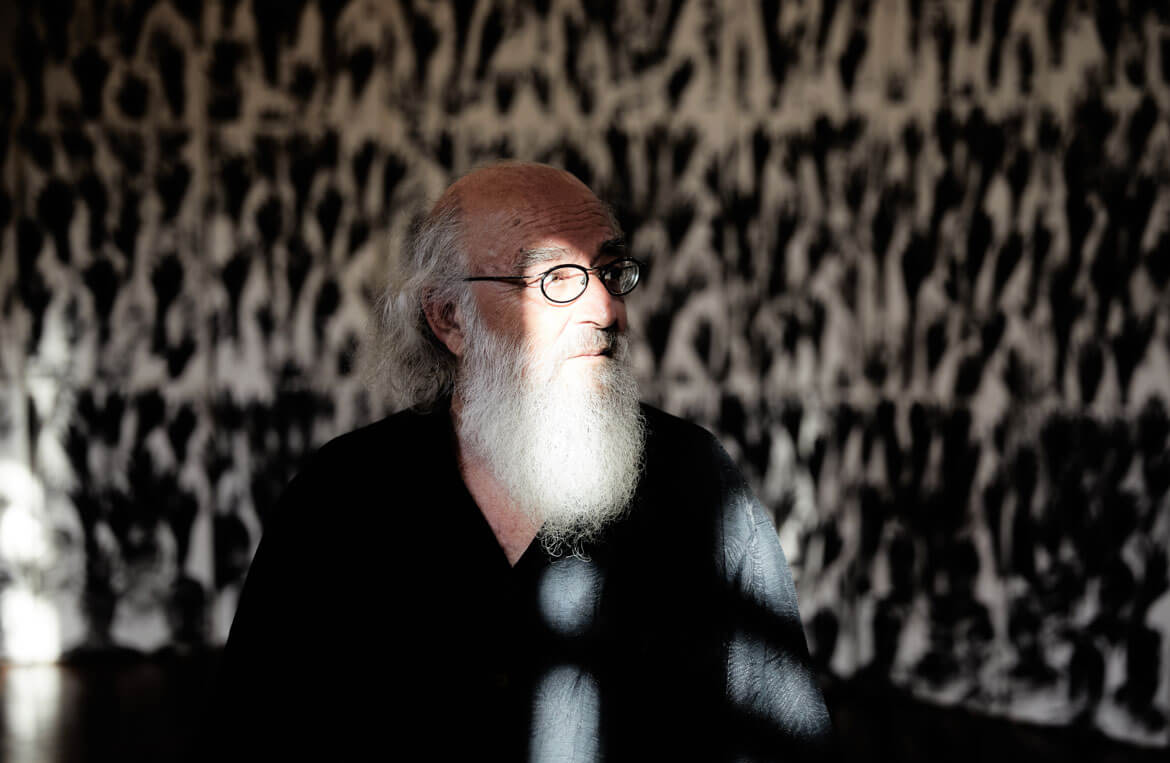 Georgios Xenos was born in Athens in 1953. He studied at the Ecole nationale superieure des Beaux Arts- Section des Arts Plastiques in Paris, during the years 1976 – 1982.
Georgios Xenos was born in Athens in 1953. He studied at the Ecole nationale superieure des Beaux Arts- Section des Arts Plastiques in Paris, during the years 1976 – 1982.
From 1983 to 1986 he lived and worked in Athens. In 1987 he lived and worked in Mönchengladbach, Germany.
From 1988 to 1992 he lived and worked in Berlin, where he experienced the historical events of the Fall of Berlin’s Wall. During this period, he exhibited his work in Winckelmann Museum, Stendal (June – October 1991) and in Pergamon Museum, Berlin (January – November 1992).
Since 1993 he has been living and working in Athens.
Volos Port - Window to the world
"To have a port close to you was like having the whole world close to you", the historian Eric Hobsbawm has written and this, at least in the case of Volos, is completely true. Extroversion, exchange, progress, new products, new techniques and ideas passed through the port gates and spread throughout the city. The agricultural production in the plain of Thessaly, the industrial production initially within the city and later the entry of refugees in 1922, who were employed both in the industries and in the professions of the sea, and the direct connection of the port with the rest of Thessaly and Greece through the railway line they composed a turnover in which the port had a leading role. The port of Volos was even connected to Syria in 1977. The transit line operated until 1985, when it was stopped due to political instability in the Middle East. The deindustrialization that began in the 1970s and the transfer of factory facilities to the industrial area also had its effects on port traffic. Also, for at least 20 years, the railway connection between the port and Volos station has stopped, even though the distance between them does not exceed 300 meters."
"From somewhere here, according to legend, Jason and the Argonauts started their journey to the Black Sea, intending to bring back the golden fleece. Ancient Dimitrias later developed into an important transport center and shipyard, where ships from all over the Mediterranean sailed. In Byzantine and Ottoman times, the port would continue to play an important role, mainly for the export of products from Pelion and the plain of Thessaly. The historical researcher Maria Spanou, who has undertaken on behalf of the Volos Port Authority (OLB) the study of the course of the port over time, has recorded testimonies of European travelers as early as the 16th century. There are references in the archives of Venice and Marseilles, while there is also innumerable information given by consuls and diplomats, and which Mrs. Spanou searched for in the Diplomatic and Historical Archive Service of the Ministry of Foreign Affairs. All these sources show the timeless importance of the location of the port and when a city meant a port and vice versa. We know that in the 19th century Volos was connected to many cities abroad, from Constantinople and Smyrna to Marseille and Trieste”
Text by: Lina kapetaniou
For Topoi magazine - Taxidia Kathimerini
Panagiotis Marinis
I am sharing portrait photography of a very close friend and a lovely human being, the greek sculptor Panagiotis Marinis. Panagiotis is an example of folk art sculptor that frees the form of his works through his instinct and his connection with nature.
"Sculpting with tireless but wise drive the silent surface of the stone of Aegina, Panagiotis Marinis has been processing and taming its primary material for many decades, skilfully revealing its organic nature, touching its mysterious interior which, between his hands, explodes and transforms into living flesh..." wrote Iris Kritikou in 2018 with a form the group exhibition "Diachronies", in which samples of his work were presented at the Diachronic Museum of Larissa. It returns to the same museum, from July 17 to October 30, 2023, with the solo exhibition entitled "Stone Tools", with a series of sculptures that interact with selected Neolithic and Bronze Age stone tools from the museum's collection. On this occasion, we spoke with the important artist.
Panagiotis Marinis was born in 1955 in Aegina, where he lives and works until today, remaining a lover of nature and folklore and using stone as the main raw material of his work. His involvement in sculpture began in 1981 with the main stimulus being his works and meetings with Christos Kapralos, as well as the work of Grigoris Maltese. His works can be found in private collections in Greece and abroad, at the entrance of the Aegina Town Hall (work in collaboration with the painter Giorgos Chatzimihalis), as well as in the Cypriot Consulate in New York. He maintains a permanent sculpture exhibition in his Agricultural Garden in Kypseli, Aegina. He has held solo exhibitions in Athens ("The Stone He Knew", Genesis Gallery, Athens 2016 curated by: Iris Kritikou) and in Aegina (Historical and Folklore Museum of Aegina, Markello Tower, Aegina) and has participated in many group exhibitions in Museums, archaeological sites, Foundations and private art spaces in Greece and abroad. His works belong to public and private collections in Greece and abroad.
Ioanna Tsilili for Oinochoos Magazine
Portrait photoshoot of the wine maker and artist, Ioanna Tsilili for Oinochoos Magazine. Ioanna Tsilili is a chemical Engineer, Winemaker, Master Distiller and cinema addict . Founder of @tsililisterres.
TAVERNA for Gastronomos Magazine
In this photo story about Taverna for Gastronomos magazine, I shared my angle of view and my respect to all these people who in daily basis keep alive the living history of the greek culture. In all these little spaces, mostly away from the crowd,
humanity and real contact have the first role. The philoxeny and the devotion of the owners, make these spaces ataxic and creates a space in where different people could connect, share their personalities and create culture.
"We enter the 42 oldest haunts of Athens and the countryside of Attica and talk to the people who for decades have held the reins of famous family shops that have written their own history in Athenian gastronomy.
From “Athinaikon” and “Lelouda” to “Oikonomou” and “Diporto”, the historical Athenian taverns that from being haunts of the popular strata became a favorite culinary destination of all social classes.
We select and collect the famous recipes from the most famous taverns of Athens and the surrounding area and present them in detail, with their secrets and the selected ingredients that established them: the fried meatballs of “Katsogiannos”, the yuvetsi of “Kitsoula”, the kakavia of ” Pezoula”, the rooster with thick macaroni of “Rhamnouda”, the bekri meze of “Vardi”. 40 iconic recipes immortal and timeless over the decades.
We learn the history of the tavern, from ancient Athens to the present day and gather in a glossary the old and new terms associated with the tavern and its culture.
We met people of letters and art in historic taverns and let them explain to us through their own experiences and reflections the meaning and essence of the tavern. Pantelis Voulgaris, “Deipnosophist” Christos Zouraris and Christos Chomenidis discuss and reflect on famous dishes of the Greek tavern and George Pittas gives his valuable advice to young tavern owners, through experience as well as his long-term study of history of the tavern.
How much did the Athenian tavern influence literature and music? Papadiamantis, Polemis, Karyotakis, Tsirkas were inspired by the popular atmosphere of the tavern and transferred it to their works, while theories and existential anxieties unfolded on its tables from the companies of Seferis, Papagiorgis, Papanoutsou. But the tavern also left its indelible mark in the popular song that praised it and captured its atmosphere like no other genre.
The tavern in art: Painters and photographers from Hatzikyriakos-Ghikas and Topazis to Manousakis, Craxton and Zavicianos each captured with their art and their eyes the warmth of the tavern and transferred it entirely to their canvas and film . Along with them is the self-taught popular painter Giorgos Savvakis, who with his blinding colors decorated over 40 taverns in Plaka with his murals, vividly capturing their aesthetics and patrons".
International Womens Day
From the International Womens Day campaign of Grand Bretagne Hotel. "Celebrating our lovely ladies, our heroes, our daily inspiration. Happy #InternationalWomensDay to all the strong, powerful women across the world. Keep shining!"

Vasilis & Marina Theocharakis
Vassilis and Marina Theocharaki are the inspiration and guiding force of the Theocharakis Foundation.
Vassilis Theocharakis is a multifaceted personality at the helm of a dynamic and diversified group of large-scale businesses: from the automotive industry, banking, manufacturing and healthcare, to cosmetics, digital systems and shipping.
An equally important aspect of his life is painting. Alongside his legal studies, he attended classes with the great Greek painter, Spyros Papaloukas. His first exhibition was in 1957 at the International Youth Festival in Moscow and since then he has exhibited his works inside and outside Greece, some of which adorn important public and private collections. He has been awarded the titles: Chevalier de La Légion d'Honneur of the French Republic, Archon Cartulary by the Ecumenical Patriarch and of the Order of the Rising Sun by the Emperor of Japan. Marina Theocharaki has had an active relationship with the arts for many years, with many exhibitions and publications to her credit.
Portrait photography for Grand Bretagne Magazine.
Christos Chomenidis
Portrait Photography if the novelist Christos Chomendis for Greece-is.com.
Christos Chomenidis (Greek: Χρήστος Χωμενίδης) (born 3 August 1966, Athens, Greece) is a Greek novelist. He studied Law at the University of Athens and in Moscow and Communication Studies in Leeds. He worked as a lawyer before becoming a full-time writer.[1] His book Νίκη won the 2021 European Book Prize in the Novel category
People of Spetses talk about Spetses
For the portrait photography published on the tribute in Taxidia Magazine Kathimerini, I have traveled to Spetses Island with the editor Eleftheria Alavanou. Five people from Spetses introduce us to the beautiful island of Argosaronicos from their own point of view.
Artist, 30 years old, studied visual arts in Amsterdam, lives in her great-grandfather's house near Analipsi. In the summer she works at the Baraka gallery, in the winter she is busy with her own artistic work, fishing and walking in nature. Eva Vassiliou is one of the five locals who help us get to know the island of Regatta and Armata through another lens. All of them have seen the Spetses of the four seasons: from the fever of summer to the undisturbed quiet of winter. All of them have a substantial relationship with Spetses, because their lives are connected to the basic materials from which the island is made: the sea, the landscape, history, the people who marked it, art. Everyone, in short, knows them deeply.
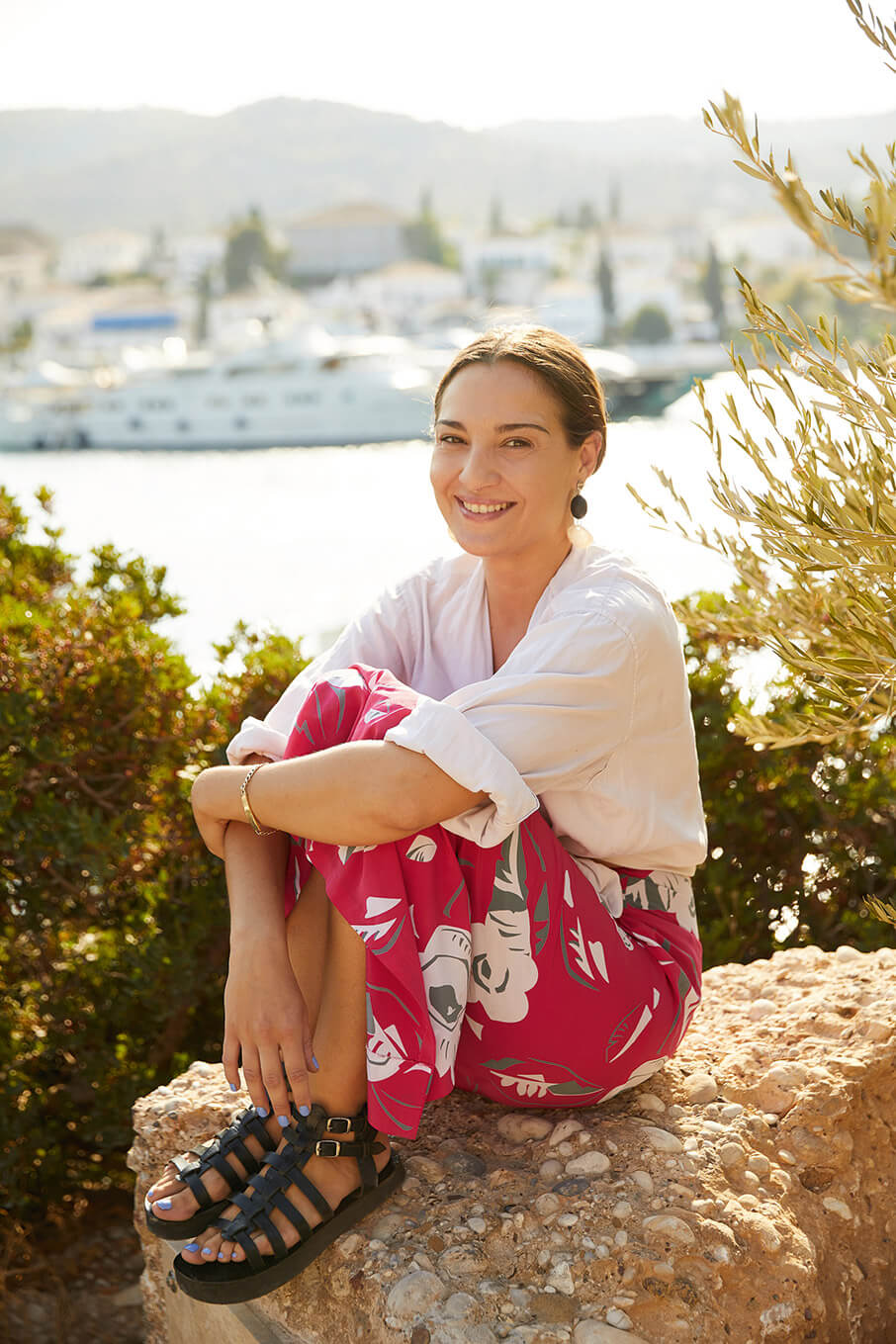
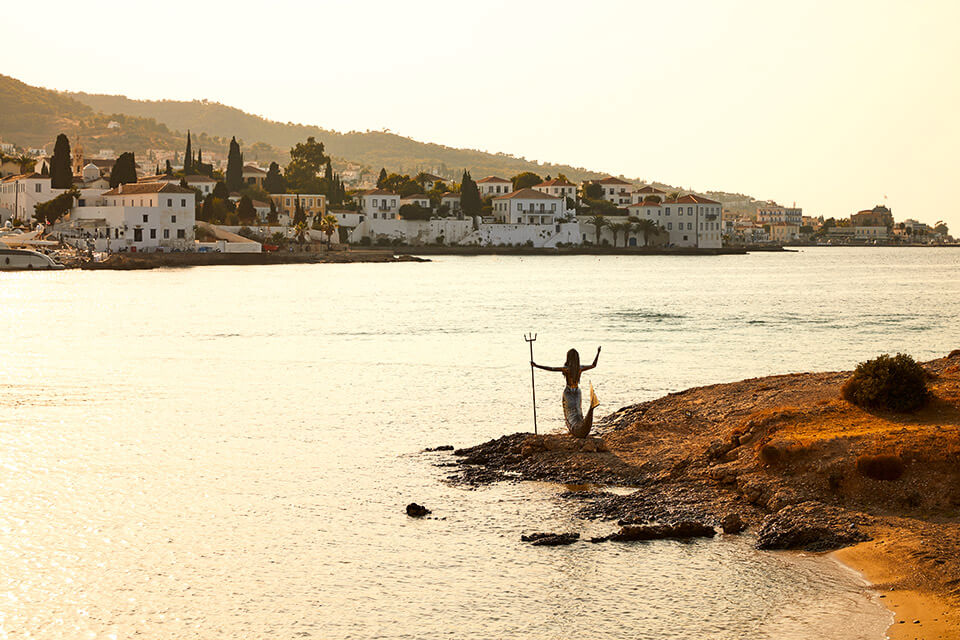
Portrait photography of the tribute includes a selection of different characters that are residents on the Island of Spestes. Grigoris Katsouranis, with more Augustus on his back, but with similar energy, since he is evergreen and energetic like a little kid. Mr. Grigoris is one of the few craftsmen who know the art of shingle in Spetses, a "difficult job", because "you have to sit down for eight hours laying shingles", resulting in pain in the knees, hands and back you. Despite the effort, a craftsman can in eight hours make a 2 m2 pebble, often on a marine theme, such as boats, mermaids, fish, dolphins, octopuses, although there are more strange, as a belfry or a breeches in a fez. To a certain extent, however, there is a recycling of the subject matter in the designs ("we resurrect the old ones"), which probably contributes to the aesthetic harmony, limiting the dissonances. The nice thing about pebbles is that they decorate both the public space and the houses, in other words they express the Spetsian society as a whole, but also the Spetsian landlord. In personal time, when he is not busy with pebbles or other tasks, Mr. Grigoris usually goes to the Cafe to drink evening coffee. Not meraklidiko Greek with cream, as I expected him to tell me, but an iced Fredo espresso. He swims with his wife in Agia Marina, attends church in Analipsi, spends the summers at his home in Kokkinaria and the winters at his house in Dapia.
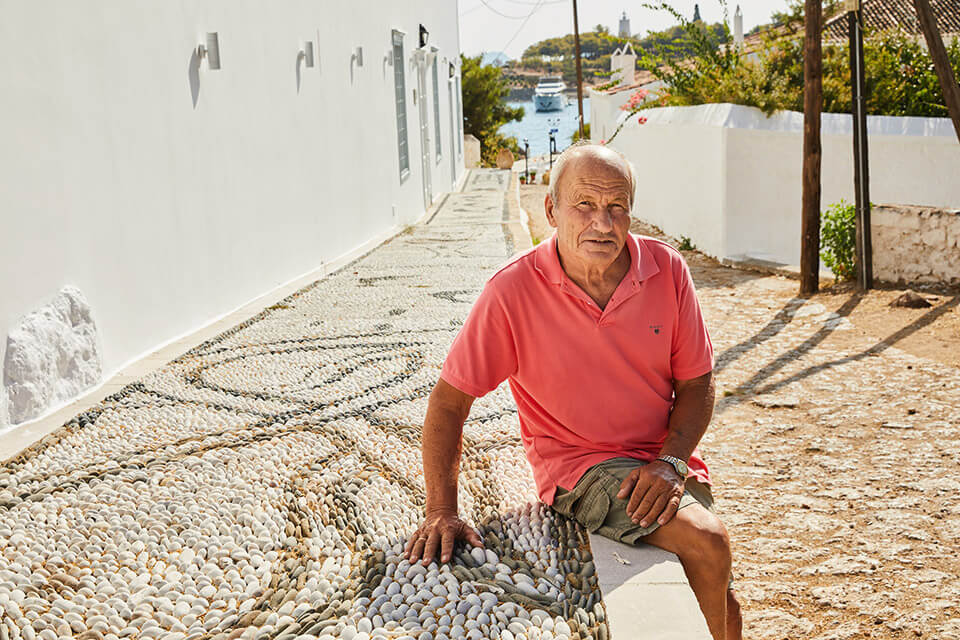
The custodian of another traditional art, which is also identified with Spetses, is Pantelis Korakis, a second generation ship carpenter, who owns one of the island's seven tarsanas, in the old port. Pantelis has spent his entire life in Spetses, with the only break being when he joined the army. He began learning at the age of 10-12 with his father, who represented an older generation of shipwrights who believed that art was not taught, but stolen. "If you caught it, you caught it. That was the mentality of the old ones." Tarsana was named after him 23 years ago. The distance from his house is two minutes by motorbike and his daily working life includes an open-air workshop in front of the sea, with discarded wood, geese coming and going, himself barefoot and behind him a dog without a name, who follows him everywhere, even when he gets inside the boats. People come, his sister makes coffee, his friends show up, drink a beer, leave. The place looks like a coffee shop. "All traditional tarsanas are coffee shops," he tells me. They are also places of hard work, however, since Pantelis repairs and builds wooden scaffolding, using the designs he inherited from his father. It deals with, among others, amateur or professional fishing boats and holiday boats staying in Spetses. "A wooden boat is like a friend. It's not impersonal, a lot of people have worked on it." He himself has a 9-meter trachantiri, "Agia Marina", which he built a few years ago with his own hands.
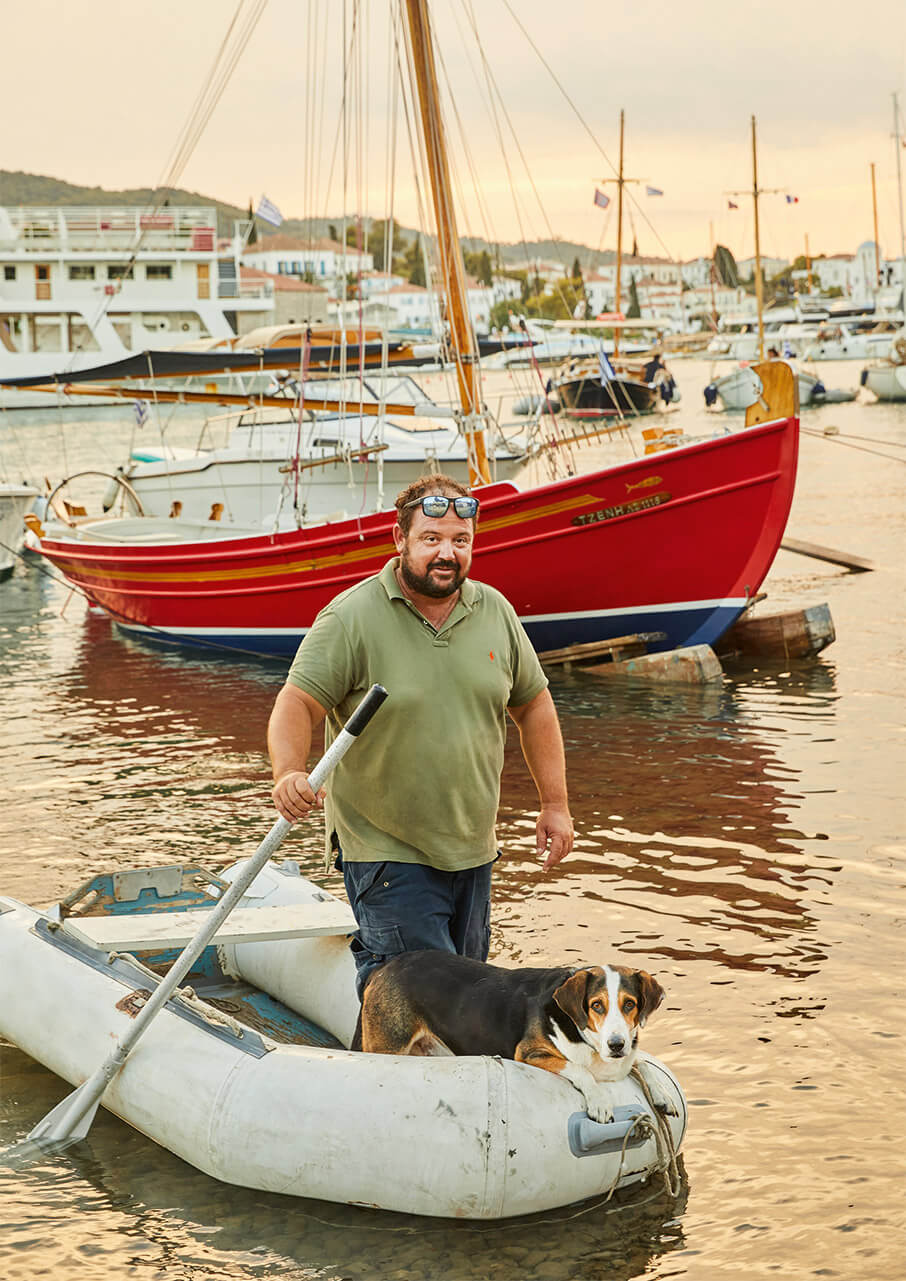

Miaranda Markou, I imagine that she loves the sea very much, since he works next to it, by it and for it. But there is a Spetsiotissa who I think loves her more or in a different way. Miranda Markou is thirteen and a half years old, a 2nd High School student. As a child, he used to go swimming at Scholes beach, below the Nautiko Omilo, and he would watch the boats dock. "I liked it all and decided to start sailing." She was not six years old, but she was drawn to the sea and the freedom of the sport. Started with bug, moved to optimist and now has a laser. Listening to her talk about the positives of the laser as a boat, her desire to go to Piraeus to see the Olympiakos sailing academy, and that she has heard very good things about the Aegina club, I think how much of a… vitamin that is for a teenager dealing with the sea in winter and summer and not with the computer, how firmly the character and self-confidence are built when he learns to command a boat from a young age. And above all, how nice it is to be thirteen and a half years old, to live on a small Greek island, to live in the middle of nowhere, in the city, but outside of Dapia, and your means of transportation to school, friends and your group is by electric skate, on foot or on your parents' motorbike.

In the portrait photographs except the people, one can see the diversity of the Island. Spetses, however, is identified with another captain, older, a woman who far exceeded the limitations imposed by society on her gender, after becoming "the first female admiral in world naval history", as Pavlos Demertzis-Boumboulis tells us for Laskarina Bouboulina, great-grandmother of his great-grandfather. Pavlos is 33 years old, a modern man, without a dress or tsarouchia, but who carries a heavy, distant and at the same time familiar name. A name that would have been lost from his family had it not been for the intervention of his grandfather, Christos Demertzis, husband of Euphrosyne nee Bouboulis, who "with an official request to the Ministry of the Interior requested that Bouboulis be added to his son's name, that is to say my father, lest he perish. That's how we have both surnames, Demertzis-Boumboulis". What is it like growing up on the island of Bouboulina with that last name? "When I was a kid, it wasn't that easy. First of all, we grew up with a museum over our heads. They chased me at school to do every play, to say every poem.

Growing up, I understood what Bouboulina is, what it means to the whole world and what duty I have towards this name." Pavlos, together with his mother and siblings, is in charge of the Bouboulina Museum, which is housed in the captain's mansion. He spends the summers on the island, the winters between Spetses and Athens. "September and October are beautiful months in Spetses. In winter it's us and the cats, which of course has a beauty, the island still smells of pine and thyme". As for the museum, it remains closed during the winter months. Bubulina is sleeping. Until next summer when the island wakes up, she will wake up too, and she will come to life for another year through the stories of her descendants.
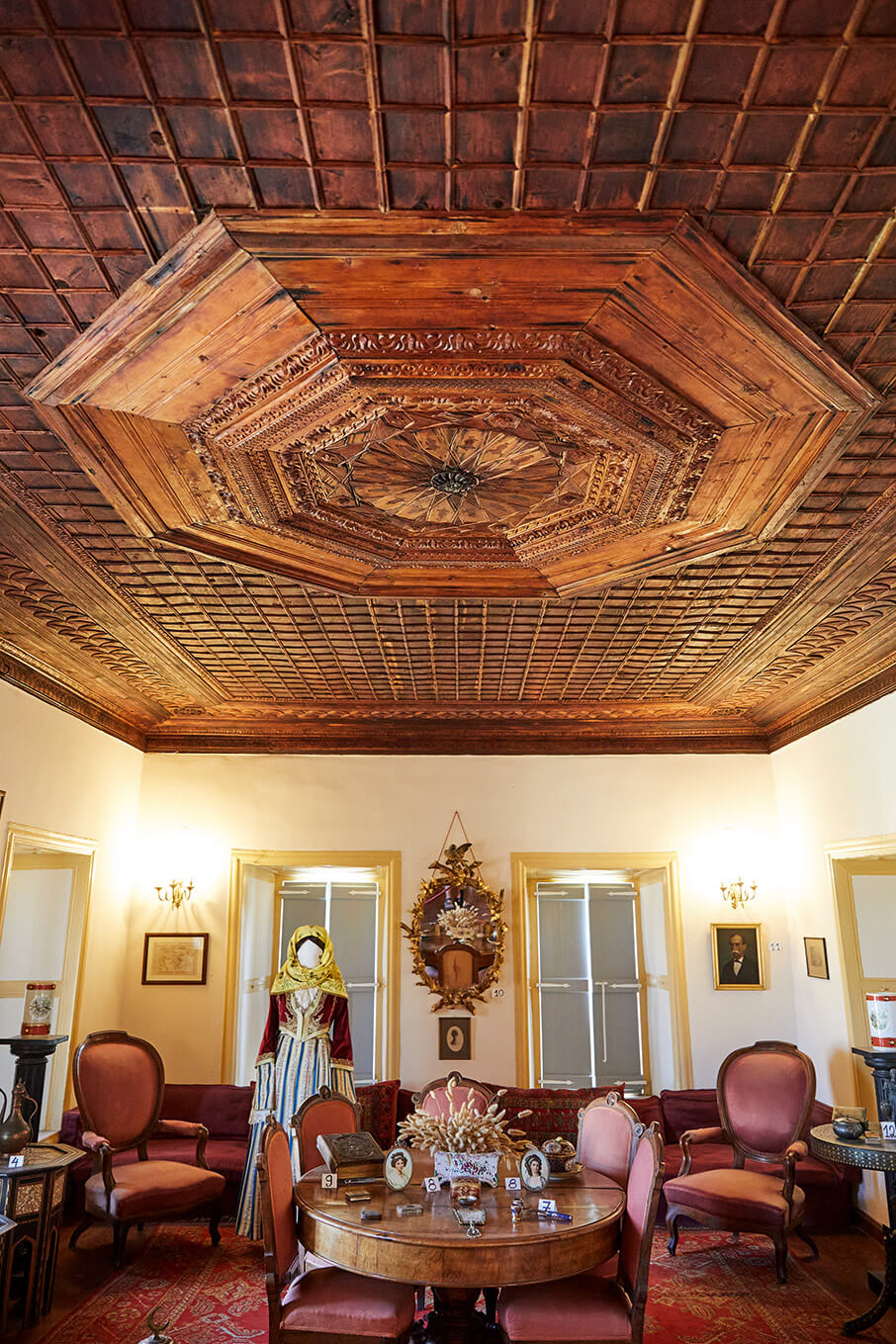
In recent years, Spetses was marked by two people. The first is Boubulina. The second is Sotirios Anargyros (1849-1928), a Speciotian immigrant who made a huge fortune abroad. Its history and its relationship with the island cannot be described here, they need a book. Among many other things, Anargyros created the Anargyrio and Korgialenio School (which functioned as a college until the 1980s), reforested Spetses, which had been deforested for logging and farming, envisioned and built Posidonio, one of the most beautiful hotels of Greece, which in 2014 turned 100 years old. Since 2009 it has been renovated by the Bordonis family. As Mr. Manolis Vordonis mentions, Anargyros protected it, ensuring that it cannot be sold by the Anargyriou Foundation or change its use beyond that of the hotel. For the plans, Anargyros and his architect traveled to the south of France, took images and ideas from the resorts of the French Riviera and transferred them to the beach of Spetses. Seeing it today, restored to the original standard, one is bewildered by the strange beauty of a landmark that has something foreign and yet something so peculiar. Painted in light tones, with turrets and columns, the Poseidon combines influences and currents. The main thing that differentiates it from the luxury accommodations of today is that it is not of pharaonic size. The entrance, the living room, the garden, the pool are made on a human scale so as a guest you feel comfortable. Passing through the outer door of Poseidonio, you feel that someone is waiting for you inside.
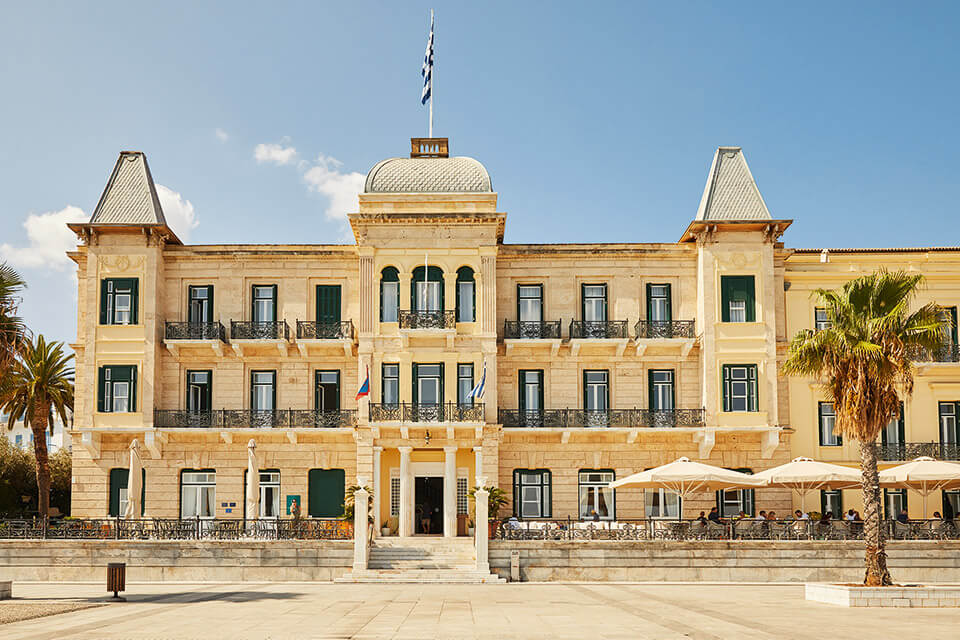
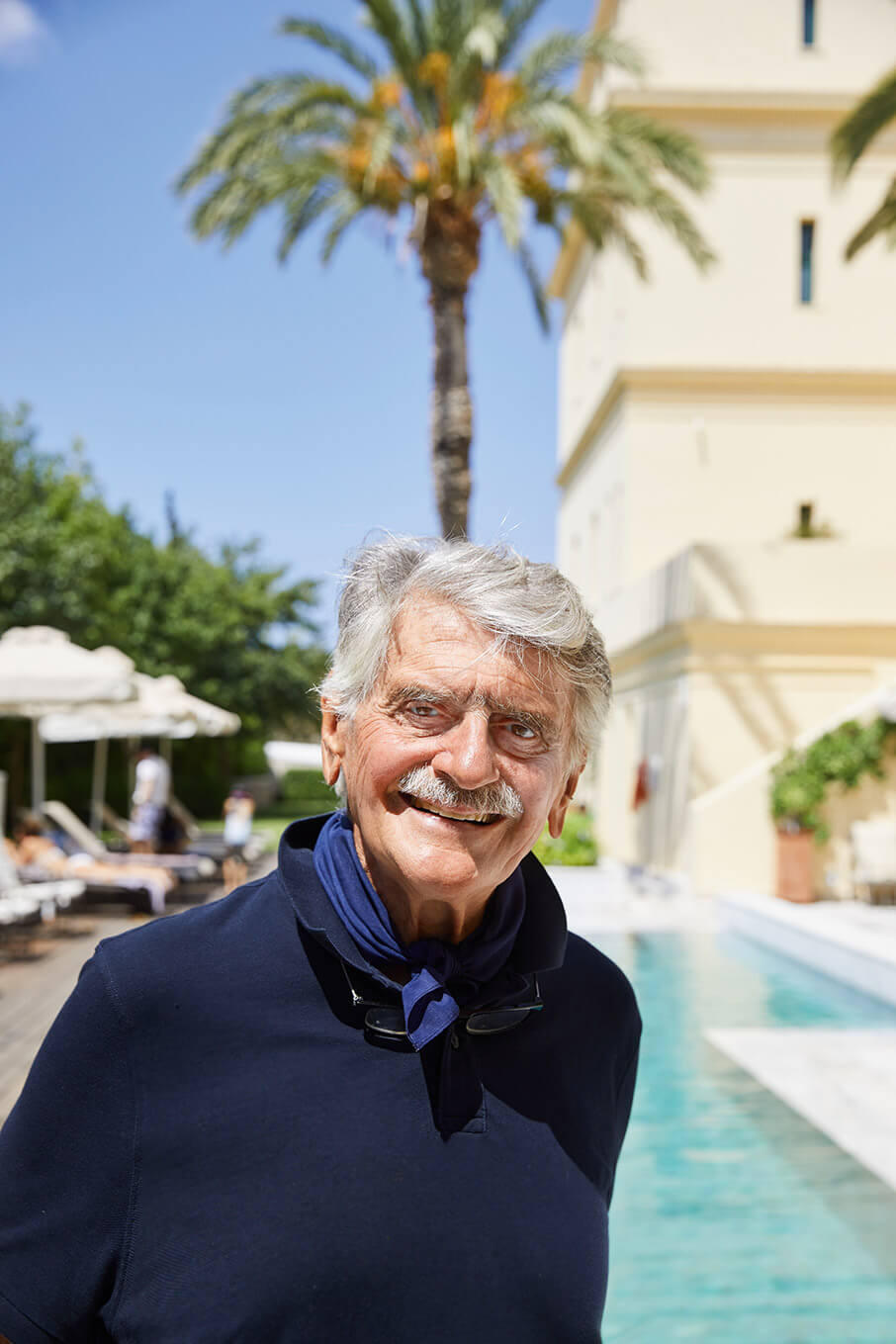
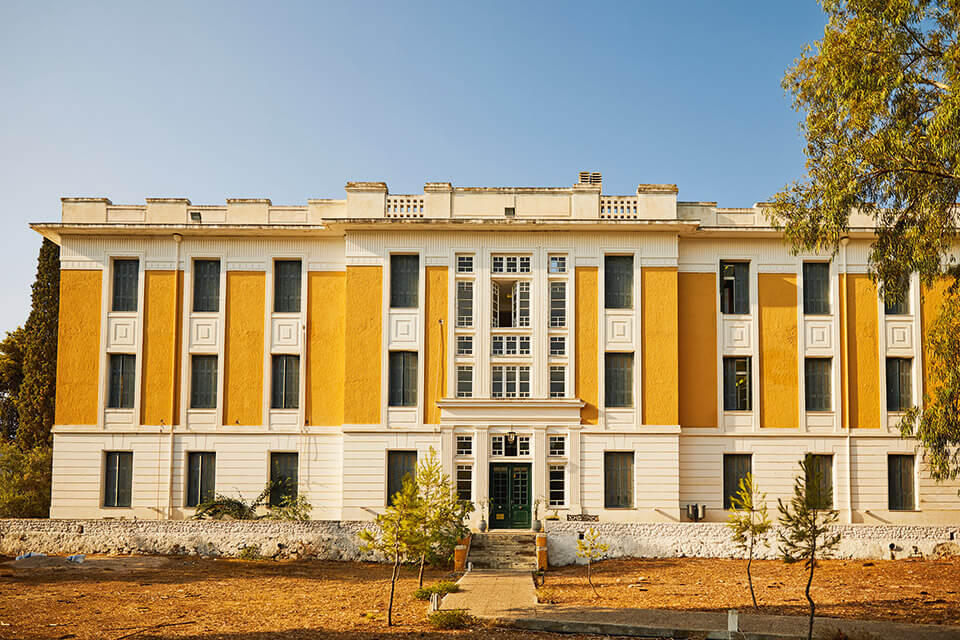

Costa Navarino Resort food photography
In this food photography for Costa Navarino Hotel in Greece, main object is the recipes with Navarino Icons products. You may not be able to pack the Messinian sun, sea or landscape into your suitcase, but you can certainly take some of its wonderful flavors back home to treat yourself to a Messinian meal. With more than 50 international distinctions so far, the Navarino Icons line of select products from local producers provides you with the ingredients and the inspiration to adopt a healthy lifestyle with all the Mediterranean diet benefits, while indulging in the delicious flavors of Greek food.
I live in a country with a great food culture, that produce a great variety with unique quality of raw ingredients. Many different tastes and cuisines, from one end of Greece to the other, give a rich culture, a polymorphic taste in such a small country.
Food is such an important part of vacations and food photography of every hotel or resort should bring this quality to the viewer. Costa Navarino is a unique combination of beautiful geography, friendly weather, local products. Because of all that has become one of the most known destinations for family vacations worldwide, ideal place to rest body and mind.
In this set, breakfast has these qualities, made of fresh and pure ingredients from the surrounding area of Kalamata and gives to each visitor the feeling of hospitality one needs to relax and feel joy. This year Greece was named 6th Best Country to visit worldwide and 3rd Friendliest in Europe following Condé Nast Traveler’s 2022 lists. The Westin Resort, Costa Navarino and the The Romanos, a Luxury Collection Resort, Costa Navarino is one of the best resorts and hotels in Greece.



